Maybe you have heard of Google Trends before and know a thing or two about how it works. What you might be missing, however, is some actionable tips on how to actually use these Google search trends to your site’s benefit. That’s why we’re here! What you’ll read next is a guide on how to use Google Trends for a variety of purposes.
This free website can help you in many ways – find a niche; do keyword research; see what is trending on Google, and even more specifically, what is trending on Google in your own country; get new content ideas; compare topics; or learn more about your audience.
Whatever reason(s) brought you to this article to learn more about Google search trends, we’ll show you how to do all of these things. Again, Google Trends is completely free, so if you’re just starting out, it’s something you should look into. Let’s dive in!
How to use Google Trends for various needs in 2022
To make this easier for you to read, we’ve broken this post down into sections based on needs. In each section, we will show you how to use Google Trends to achieve a particular goal.
Here’s what Google Trends can do for you:
- Monitor search trends
- Find new keywords
- Research your niche
- See the latest popular searches
- Compare keywords
- Optimize for video and eCommerce
- Target local audiences
- Analyze competitors
- Plan your yearly calendar
1. Monitor search trends
Thanks to monitoring trends, you will be aware of the Google search popularity of a topic at any given time. You can schedule posts based on their correlation with a higher Google search frequency during certain periods or due to certain observable triggers.
To begin your research, go to the tool and search for any given term.

For instance, if you want to write about (or sell) jackets, give it a search in Google Trends and check the chart. You will notice that this term has more searches during winter, with a peak in November. You will also notice that it loses popularity between February and October.

It applies to any term that you want to learn more about. Recognizing the patterns will help you publish your content when people are really hungry for it. Publishing at the right time will attract more visitors to your site than if you published after people have already lost interest in a topic.
This mostly applies to seasonal topics. There are also evergreen ones that can stay on top of the charts throughout the entire year. This means that you can write about them anytime you want.
For example, “improve sleep” is constant throughout the year, even though it has its fluctuations here and there. So if you were already interested in writing about this topic, you could now rest assured that it would be worth your time.
Why?
Because a quick look at the Google search frequency will show you that its popularity has been trending upwards.
Of course you’d still have to compose a well-written, informative article that’s optimized for SEO, but checking the Google search popularity is a must before you put pen-to-paper, or fingers-to-keyboard. It almost doesn’t need to be said because it’s so obvious, but:
There’s little point in writing an article about a topic that nobody is interested in reading about – unless you’re intentionally targeting some tiny, private audience.

Another reason why you would want to check Google search trends is to update your old content. Make sure to update it with queries that are of high interest during a specified time period.
By default, Google Trends gives you a range of 12 months to analyze a search term, but you can change that range to more than one year. This gives you more clarity on which keywords perform well in the long run, versus which ones experience search spikes for brief, finite periods.
If you’re addressing an international audience, then you can also check what is trending on Google in a specific country.

2. Find new keywords
The best way to get new content ideas is to start your search with a seed keyword, select the time range and country, and scroll down to see the last two blocks.
In the “Related queries” block to the right, you will get suggestions that are related to your seed term. Filter the keywords to get the top results and you will see the most searched queries for that time range.

If you click on any of these related queries, it displays more data about that specific query and even more keyword suggestions. So you can jump from keyword to keyword, and check what the Google popular searches are that relate to your topic. This will give you new content ideas to write about.
Google Trends also enables you to look at this search information in two different ways:
- Hot (rising) topics that have been recently gaining popularity
- Popular topics from a specific time range that you select
The top queries display the most searched keywords that are related to your topic.
💡 Tip: For the rising queries, you will usually see by what percentage their searches increased during the period you selected. But, sometimes, you will see the word “Breakout” next to them. A query that is marked with “Breakout” has been growing by more than 5000% lately. So these are the search terms to aim for if your goal is to attract a lot of traffic to your site.

Be careful, though, because many of these keywords don’t have long-term popularity. They are temporary keywords that are trending for a limited period of time and then disappear.
Make sure to take a look at the “Related topics” block as well for more inspiration. There, you will see the topics that users searched for in relation to your main search term.

3. Research your niche
Before deciding upon a niche for your website, make sure it is something that people are still hungry to learn more about, and where you feel you can add some unique value that will resolve a problem or alleviate a pain point. Trends come and go, so you want to research and validate if your idea has potential for longevity.
Google Trends is an excellent tool to use for this exact purpose. First, search for the niche you’re considering for your website. Next, switch the stats date in “Interest over time” from 12 months to 2004-present. This way, you can have an overview of how it has evolved or regressed over a long period of time. Think of it as a Google search popularity longevity tool.
For example, if you look up current topics like “bitcoin” or “vlogging,” you will see an overwhelming increase in the charts over the past few years. In contrast, if you search for “finance,” you will notice that this topic doesn’t have any drastic spikes. Instead, it’s had a loyal, steady, popular following for a number of years.
So, based on the numbers in front of you and the fluctuations in the chart, you can understand better which niches have more chances of success. If the charts are constant, even though there is no considerable increase, it’s still a good sign. It means that your topic has an interested community of followers that consistently seek out information about it. You can tap into that interest and build a loyal community of your own around the topic.
Unless you are into pump-and-dump schemes, which we would advise you to stay away from, you’ll want to steer clear of search terms that see temporary spikes in Google search frequency, followed by massive drops. You do not want to commit to a niche that is inherently volatile and risky.
4. See the latest popular Google keyword trends
In contrast to making a long-term commitment to a volatile niche, sometimes writing one-off pieces of content about topics that are surging in popularity can bring benefits to your blog or website. As long as the topic makes sense and fits in with the broader niche of what your site is about, then writing a time-sensitive article about a hot topic can bring more traffic to your page.
For this particular purpose, Google Trends is like your best friend.
How to use Google Trends to get the list of the latest popular searches?
Just enter Google Trends, select the country whose trends you want to check (top right corner), and scroll down.
Here, you will see the recently trending searches and the yearly top searches in that country. Keep in mind that these currently trending keywords are temporary and they might not be as popular next week or month.

If your website writes about contemporary news topics or short articles are part of your content strategy for boosting traffic, then this feature in Google Trends is a must-have resource. However, if you plan to write an evergreen piece of content, then you should not rely on the latest trending searches. Keyword research using longer time frames will be much more relevant for this type of long-form content.
5. Compare keywords
Use the Google Trends’ comparison option to see which relative keywords have the most searches and how they fluctuate over time.
As we stated earlier, there are terms that experience huge spikes in popularity for short periods of time and then sink down to very few searches per month. On the other hand, there are terms that never see spikes, but remain constant for a long period of time.
If you need your content to have long-term relevance, then you would want to use the constant search term, because it will have staying power.
This feature is cool because it’s easier to observe the differences and find the most effective keyword when you have all the stats presented in the same chart.
Let’s take this interesting example where we compare podcasts vs audiobooks:

It seems that podcasts are people’s favorite form of audio content. After seeing a drop in popularity in 2008, they rose again in 2017. Even though there’s been a slight decline in searches in 2021, they seem to remain dominant.
Another interesting observation is that, while podcasts have ups and downs in the number of searches, audiobooks follow a constant path from their very beginning to today.
6. Improve SEO for video and eCommerce
If your business relies on video marketing or eCommerce (or both), Google Trends is a good resource to understand how trends vary.
When you search for a term, change the channel from “Web Search” to “YouTube Search” or “Google Shopping.” The results you will get will only include one of these two platforms and not the general Google search engine. Think of it as Google Trends YouTube edition.
They are very helpful because you can see what products or industries are popular for eCommerce shops. Also, you can find topics that can make for successful videos based on what people search on YouTube.
For example, if you search for “how to cook,” you will notice that it has more weekly searches on YouTube than it has in Google search. So, if you want to create content about this topic, you might want to consider resorting to videos.
This is a cool feature because, while some keywords work great for blog articles, they might not be so popular in a video format, and vice versa. It helps to adapt your content based on the topic, and the audience’s preferred means of consumption.
7. Target local audiences
Another useful aspect of Google Trends is the fact that you can use it to learn about your audience on a deeper level. When you search for a query, you will see the regions and cities where your content or products have the highest Google search frequency.

You can use this data to optimize your website for local SEO and target these specific regions through paid advertising or custom content. You can personalize your content marketing to reach more of these targeted areas and increase conversion rates.
8. Analyze your competitors
Sometimes people search for a specific brand they trust when they look for a product. The same happens if they enjoy a specific blogger’s content or vlogger’s videos.
Through Google Trends, you can see in “Related queries” if any brands show up in people’s searches.
If I search for “coffee,” I get “Starbucks” as one of the top queries that are related to it. When you see brands in the suggested queries, you get a hint at who your competition is and can study their marketing strategy.
You can also use the comparison feature to see how Google trends compare among your competitors or even versus yourself. These stats will help you analyze your market and spot the areas where you can improve your branding strategy.
You can even write content to compare your products with those of your competition and present the benefits of your products to the users.
9. Plan your yearly calendar
If your niche involves writing about hot topics that come and go for short periods of time, proper editorial planning is what you need. With these kinds of topics, timing is crucial. Your content, sales, or seasonal offers need to go live around the same time that Google search trends for them are hitting their peak.
By learning how to use Google Trends, you will be able to look up keywords and topics in advance, check their historical patterns, and schedule your content based on the assumption that the patterns will continue to repeat.
Google Trends FAQ
We covered a lot of ground in this article and we recommend you bookmark it if you didn’t get a chance to thoroughly read it all. In the meantime, before we wrap it up here, if you want a quick, straight-to-the-point answer about a particular question, below are some frequently asked questions and answers about Google Trends:
Yes. Google Trends is a free tool you can use to do keyword research, improve your SEO, plan out a successful content strategy, and so much more.
Every single day there are trillions of searches on Google, and those searches generate a lot of data. The search engine’s algorithms organize this data based on both the broad query topic as well as the specific keywords used in any given search. Google then takes a random sample from this data to show the changes in interest for a topic over a period of time. In other words, it shows you what’s trending.
Advertisers, like marketers and others involved in business, benefit from Google trends in several ways, but one of the most important is market timing. By using Google Trends, an advertiser can look at both historical search trends for a product they want to advertise, and also what happens to be very popular at that present moment in time. This can help them better plan their advertising campaigns.
Google Trends allows you to validate if your desired niche is worth pursuing. First, type in the niche you’re thinking of pursuing into the search bar. Then, switch the date range in “Interest over time” from 12 months to 2004-present. This way you’ll be able to see how interest in your niche has evolved or regressed over a long period of time. If the charts show consistent interest, that means your topic has longevity, and therefore might be worth pursuing.
Most SEO tools will show you how much search volume there is for a keyword. However, that data is only based on the most recent check that the SEO tool performed on the keyword. In other words, it only shows the search volume at that given point in time. In contrast, Google Trends shows the historical interest in a keyword over a period of time. This lets you see if a keyword has long-term value, or is only popular due to some factor causing a temporary spike in interest.
Learn how to use Google Trends in 2022
This wraps up our guide on how to use Google Trends. As you can see, this tool can provide you with valuable insights to help you map out your content strategy. You can better plan ahead and schedule your content to align with the most optimal periods throughout the year. It will also give you actionable data related to your target audience and details on seasonal topics.
To recap, here’s how to use Google Trends:
- Monitor search trends
- Find new keywords
- Research your niche
- See the latest popular searches
- Compare keywords
- Optimize for video and eCommerce
- Target local audiences
- Analyze competitors
- Plan your yearly calendar
How often do you use Google Trends? Do you think it is a must-have tool for any individual or business looking to increase site traffic?





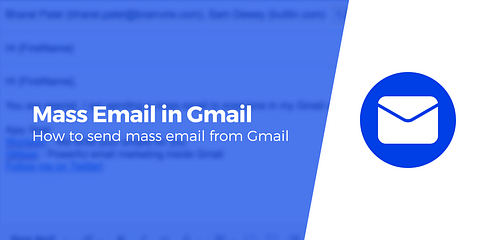
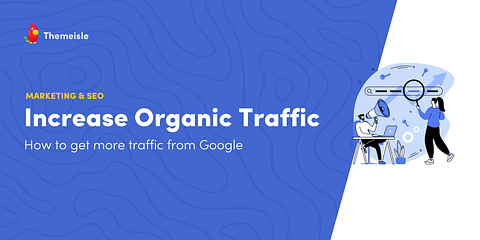

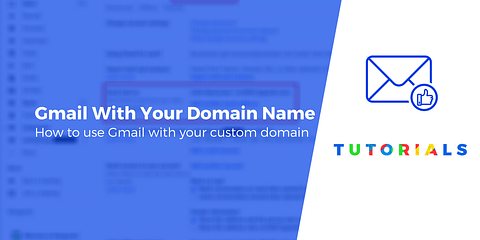
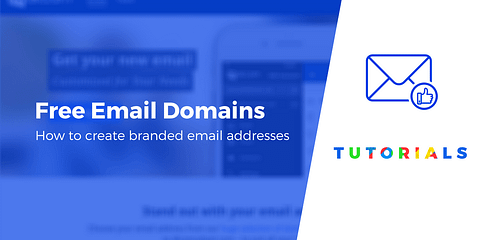


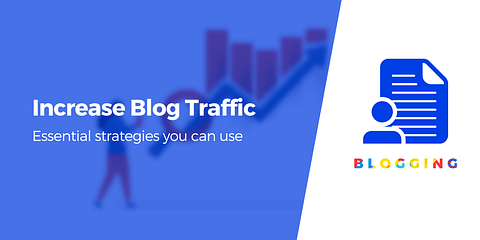






Or start the conversation in our Facebook group for WordPress professionals. Find answers, share tips, and get help from other WordPress experts. Join now (it’s free)!